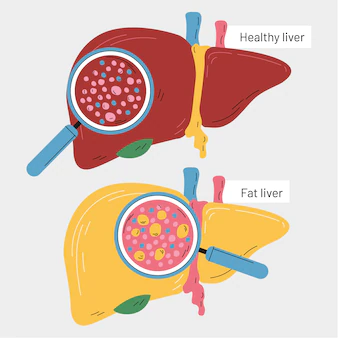Nonalcoholic Fatty Liver Disease

Nonalcoholic fatty liver disease (NAFLD) is a condition where excess fat accumulates in the liver of people who drink little to no alcohol. It is a common condition, affecting an estimated 25% of the world’s population, and is often associated with obesity, insulin resistance, and metabolic syndrome.
NAFLD is typically a silent disease, meaning that people may not experience any symptoms. However, in some cases, people may experience fatigue, weakness, abdominal discomfort, or jaundice (yellowing of the skin and eyes).
There are two main types of NAFLD: simple fatty liver and nonalcoholic steatohepatitis (NASH). Simple fatty liver is a benign condition that does not cause liver damage, while NASH is a more severe form of the disease that can lead to inflammation and scarring of the liver (fibrosis) and, ultimately, cirrhosis and liver failure.
The diagnosis of NAFLD is typically made by imaging tests, such as ultrasound or MRI, or by a liver biopsy. There is no specific treatment for NAFLD, but lifestyle modifications such as weight loss, regular exercise, and a healthy diet can help improve the condition. In some cases, medications may be prescribed to help control blood sugar, cholesterol, and other factors that contribute to the disease.
